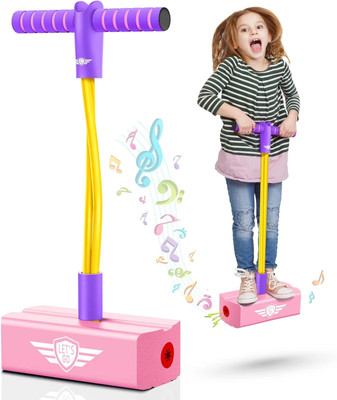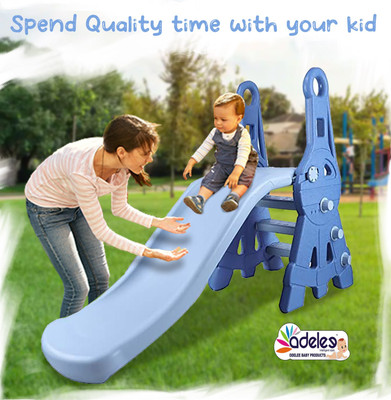
Get notified when this item comes back in stock.
Share
JUMP N PLAY Trampoline (In-Ground)
Be the first to Review this product
₹8,097
₹12,999
37% off
Seller
Description
A trampoline is a large, flexible, usually circular or rectangular piece of equipment used for bouncing, primarily for recreational or athletic purposes. It consists of a strong fabric surface, known as the "bounce mat," that is stretched tightly over a frame and supported by springs or other suspension systems. Key Components: Frame: The outer structure of the trampoline, often made of steel or another durable metal. It holds the mat and provides stability. Bounce Mat: The fabric surface where people jump. It is typically made from a strong, woven material. Springs: These are attached to the mat and frame to create tension and allow the mat to stretch and bounce when pressure is applied. Safety Padding: Soft padding that covers the frame and springs to prevent injuries. Enclosure Net (Optional): A protective net around the trampoline to prevent users from falling off, often found in outdoor trampolines. Types of Trampolines: Recreational Trampolines: These are typically used in backyards for fun and exercise. They come in various sizes, from small, kids-sized models to larger, adult-sized ones. Competitive Trampolines: These are used in professional gymnastics and trampoline sports. They are often smaller and designed for higher bounce, with more precise performance. Mini Trampolines (Rebounders): These smaller versions are used for fitness routines and exercises. Uses: Recreational: Most people use trampolines for fun, jumping, and playing. Fitness: Trampoline exercises (often called "rebounding") are popular for cardio workouts and fitness routines. Sports: Trampolines are used in competitive sports like trampoline gymnastics, diving, and acrobatics.
Read More
Specifications
In The Box
| Sales Package |
|
General
| Brand |
|
| Model Number |
|
| Type |
|
| Maximum Weight Capacity |
|
| Suitable For |
|
| Shape |
|
| Frame Material |
|
| Jumping Mat Material |
|
| Springless |
|
| Safety Bar |
|
Dimensions
| Jumping Mat Width |
|
| Jumping Mat Length |
|
| Jumping Mat Diameter |
|
Questions and Answers
Q:In the image weight is mentioned as 150 kg, but in description it's written as 30 kg.
Please let me know what is the correct weight it can withstand
A:0
Ganesh Sky Balloon
Flipkart Seller0
0
Report Abuse
Q:What is the maximum weight - a person can use
A:total weight capacity 80kg
LaxmiAirInflatable99
Flipkart Seller0
0
Report Abuse
Didn't get the right answer you were looking for
Safe and Secure Payments.Easy returns.100% Authentic products.
Back to top


